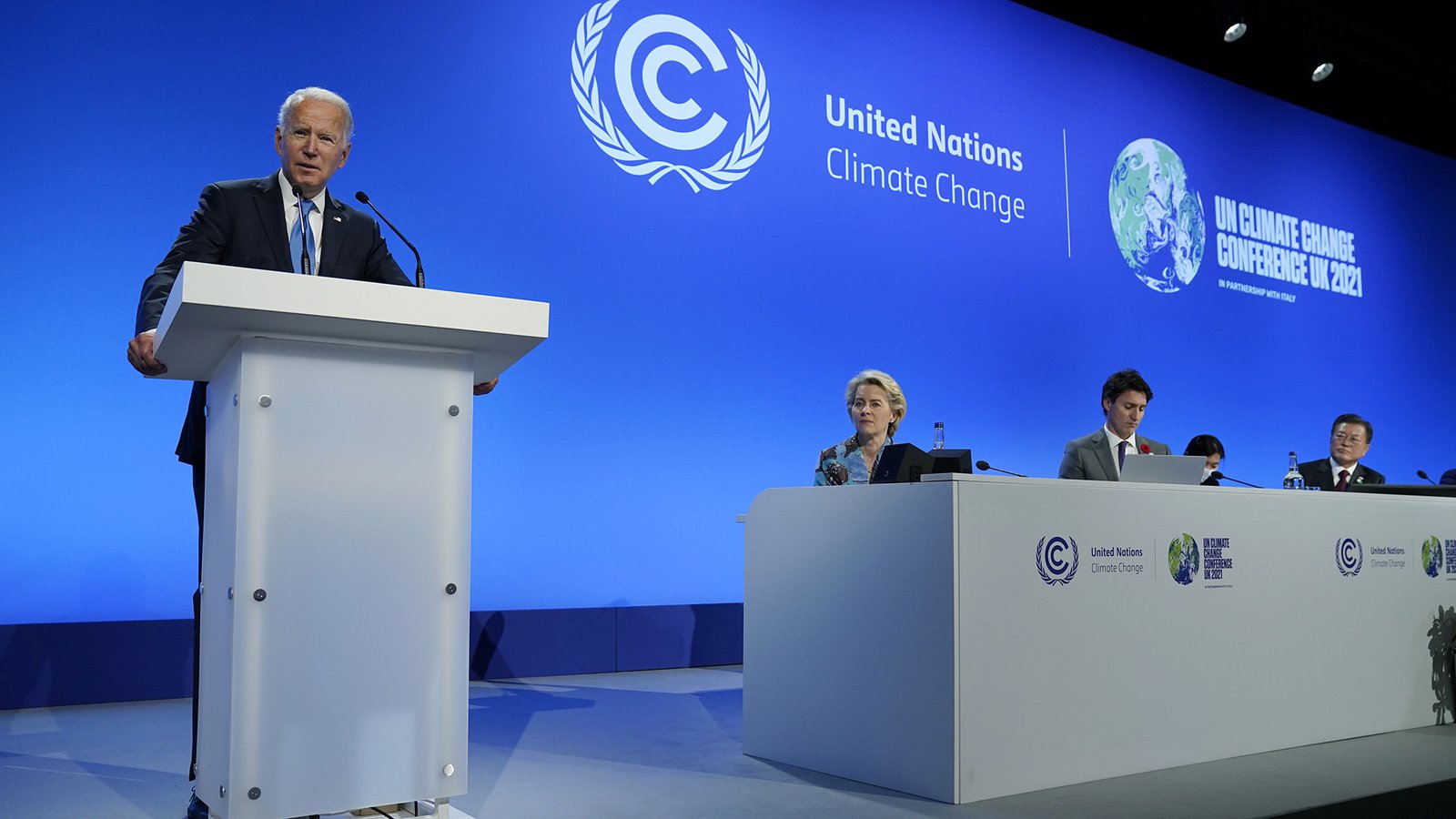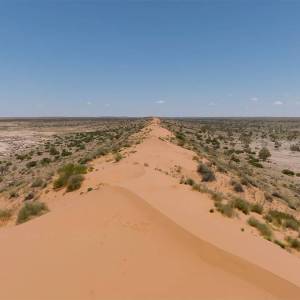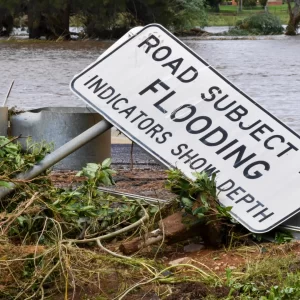
At the COP15 in Copenhagen in 2009, developed countries committed to a collective goal of mobilising $US100 billion per year by 2020 to undertake climate action in developing countries. Recent OECD reporting shows that we will fall short of this target by nearly $US20 billion. Australia has played a part in this shortfall: despite the federal Coalition government initially supporting and chairing the Green Climate Fund – the world’s largest multilateral financing mechanism for countering climate change – former Australian PM Scott Morrison pulled out in 2018, stating he would not ‘tip money into that big climate fund’. Yet it is crucial that developed parties address the loss and damage deadlock and commit to increased climate funding for adaptation and mitigation of climate change that is fair and equitable for all parties.
Over the past decade, extreme weather and climate-related disasters have killed more than 410,000 people and affected 1.7 billion people around the world. In 2020 alone, 30 million people were displaced due to weather-related events, such as severe storms and droughts. The 2021 United Nations Climate Change Conference of the Parties, known as COP26, provided a critical opportunity to take bold decisions to avert the economic, cultural and infrastructural ‘loss and damage’ caused by unprecedented climate change.
The latest Intergovernmental Panel on Climate Change (IPCC) report finds that the world has only has a small chance to limit warming to 1.5 degrees C; this is the limit that scientists say is necessary for averting the worst climate disasters. To do this, the world needs to slash global emissions by 45% by 2030 and reach net-zero by 2050. In the second half of 2021, the UN Framework Conventions on Climate Change prepared a synthesis report – ahead of COP26 – collating information from the latest Nationally Determined Contributions (NDCs) of all 191 parties to the Paris Agreement up to 30 July 2021. This report found that submitted NDCs were only projected to reduce emissions by an abysmally low 12% by 2030.
Developing Countries Perspectives
Exceeding the 1.5 degree temperature threshold would be particularly catastrophic for developing countries, which bear the brunt of extreme climate impacts. The World Health Organization estimates that climate change is expected to contribute to approximately 250,000 additional deaths per year, from causes including malnutrition, malaria, diarrhoea and heat stress, as of the year 2030. Women and girls will be disproportionately affected by climate change as it deepens existing social inequalities and threatens women and girl’s health, safety, and economic well-being. This is especially true for those who depend on natural resources for their livelihoods. Developing countries are deeply reliant on climate finance to adapt and prepare for climate change, yet it remains challenging for many to access climate finance. Being unable to access climate finance only further hamstrings communities who are already burdened by debt and pandemic recovery efforts.
In particular, climate change loss and damage present an existential threat to Pacific Island countries. Having contributed least to total global greenhouse gas emissions, the nations of the South Pacific are highly vulnerable to rising sea-levels, tropical cyclones and other climate-related risks. In Local Environment – The International Journal of Justice and Sustainability – Moleen Monita Nand and Douglas Bardlsey point out that developed nations have provided little support to respond to loss and damage and that the policy framework for this undertaking remains underdeveloped. Developed countries have contested any legal responsibility that would require obligatory payments to compensate loss and damage suffered by vulnerable countries. Taking place in late 2021, COP26 provided one of the last opportunities to address the issue of loss and damage financing fairly and effectively – before it was too late.
Recommendations leading into COP 26
Several organizations offered important recommendations for climate finance talks at COP26. The Allied for Climate Transformation by 2025 (ACT2025) consortium was formed to represent climate-vulnerable and developing countries and ensure they were empowered and supported at COP26. The ACT2025 Alliance Statement states that success at COP26 can only be achieved if developed countries and major emitters demonstrate genuine leadership and show credible commitment to transformative change, and real cooperation and solidarity with climate-vulnerable countries to solve the climate crisis.
The ACT2025 Call to Action laid out five areas to begin rebuilding trust with vulnerable nations, encourage international cooperation, and reach an ambitious and just outcome at COP26 in Glasgow. These were:
- Greater ambition
- Scaled up climate finance
- Enhanced tracking and support for adaptation
- Support for loss and damage
- Finalized rules and architecture
With regard to ‘Scaled up climate finance’, ACT2025 suggested that developed countries must update their climate finance pledges to meet the commitment of US$100 billion per year by COP26 and adopt a roadmap for delivering $500 billion at a minimum, over the period of 2020–2024. It also recommended that trillions of dollars – rather than billions – must to be mobilized and a new finance goal be set up based on the needs of developing countries. Lastly, climate finance must be used to ensure more access to grants and concessional finance for adaptation and mitigation (both the full ACT2025 Alliance Statement and a summary of the Call to Action can be found here).
The World Wildlife Fund also prepared an ‘Expectations paper’ including five key recommendations to unlock the political deadlock on loss and damage to meet the needs of vulnerable communities:
Ensure full operationalization of the Santiago Network on Loss Damage, providing action and support for vulnerable developing countries:
- Ensure full operationalization of the Santiago Network on Loss Damage, providing action and support for vulnerable developing countries
- Establish a loss and damage finance facility with new and additional loss and damage finance. The facility would channel finance to address the loss and damage needs of vulnerable developing countries and it was suggested that it could be a combination of existing UNFCCC financial instruments (Green Climate Fund, Global Environment Facility, Adaptation Fund, etc.) and more (Global Disaster Risk Reduction Fund, etc.)
- Inclusion of loss and damage in discussions on the new finance goal that will come into effect from 2025, with new and additional sources of finance
- Adoption of a decision to make loss and damage a permanent agenda item for the subsidiary bodies (SBs) and COPs, and
- Provide guidance for inclusion of loss and damage as a core element of any country’s long term climate change strategy (LTS) and National Determined Contributions (NDCs).
A full explanation of each recommendation can be found here.
What did COP26 achieve for loss and damage?
Thelatest Organisationfor EconomicCooperationandDevelopment(OECD)reportestimates that developed countries had only mobilized $79.6 billion in total climate finance in 2019– only a 2% increase from 2018. While how commitments are measured is up for debate, most agree that developed parties also failed to reach their commitment to mobilize $100 billion of funding annually on time in 2020. With so much at stake, many parties hoped for strong leadership and decisive action on loss and damage financing at the COP26 meeting in late 2021. Unfortunately, the resulting Glasgow Climate Pact failed to secure the establishment of a dedicated new damages fund which vulnerable nations had pushed for – due to resistance from developed nations such as the US, the EU and Australia.
Pacific representatives have condemned the pact as ‘watered down’ and a ‘monumental failure’ that puts Pacific nations in existential danger, commenting that Australia’s refusal to support Pacific countries was ‘a deep betrayal’ of the region. Auimatagi Joe Moeono- Kolio, a Pacific senior political adviser to the Fossil Fuels Non-Proliferation Treaty Initiative who has worked with Pacific governments, states that ‘despite their historical responsibility for our current plight, developed nations like the US, UK and Australia refused to support a funding facility for loss and damage which, in Australia’s case, presents a deep betrayal and abdication of its responsibilities to its Pacific neighbors.’
Importantly however, the Glasgow deal did agree to fund the Santiago Network, a body that aims to build technical expertise on dealing with loss and damage, such as helping countries consider how to move communities away from threatened shorelines. But it appears that the most COP26 did to address loss and damage was to initiate the bare beginnings of dialogue, which most seem to agree is far too little and far too late.
So what we can expect from COP 27?
At the time of writing, COP 27 was scheduled to be held in Sharm El Sheikh, Egypt, from 6-18 November 2022. The issue of compensation for economic losses due to climate catastrophes is on the agenda for this meeting as pressure grows from vulnerable countries to prioritise this issue. These developing nations are calling for wealthier nations to compensate developing nations for loss and damage as wealthy nations have historically emitted more of the carbon dioxide which is fueling the climate crisis.
At this meeting, the Alliance of Small Island States (AOSIS) intends to present a proposal for a ‘response fund’ with the aim of helping climate victims to recover from the loss and damage caused by present and future climate events.
As Abhinav Chugh wrote for a World Economic Forum paper ahead of the meeting, COP27 takes place
… against the backdrop of catastrophic flooding in Pakistan and Nigeria, record droughts in the Horn of Africa and China, long spells of heatwaves over Europe and India and record-breaking hurricanes hitting the United States …
Discussing the need to escalate focus on climate reparations – in the context of responses to 2022’s climate-caused disasters as well as other proposals that will be launched at COP27, such as the Global Shield against Climate Risks – he concludes:
One thing is certain, at COP27, the debate will be influenced by countries hardest hit by climate catastrophes, as well as new data on collective government and public failure on climate action.
References
‘Climate change: New report shows global response is failing people in greatest need’ The International Federation of Red Cross and Red Crescent Societies (Press Release, 17 November 2020) <https://www.ifrc.org/press-release/climate-change-new-report-shows-global-response-failing-people-greatest-need>.
Ina Eines, ‘Disasters contribute to record displacement’ Norwegian Refugee Council (Web Page, 20 May 2021) <https://www.nrc.no/news/2021/may/disasters-contribute-to-record-displacement/>.
Kelly Levin, David Waskow and Rhys Gerholdt, ‘5 Big Findings from the IPCC’s 2021 Climate Report’ World Resources Institute (Web Page, 9 August 2021) <https://www.wri.org/insights/ipcc-climate-report>.
Mima Holt, Yamide Dagnet and Nate Warszawski, ‘What Vulnerable Countries Need from the COP26 Climate Summit’ World Resources Institute (Web Page, 22 September 2021) <https://www.wri.org/insights/what-vulnerable-countries-need-cop26-climate-summit>.
‘Climate Change in Developing Countries’ Government of Canada (Web Page, 23 June 2020) <https://www.international.gc.ca/world-monde/issues_development-enjeux-developpement/environmental_protection-protection_environnement/climate- climatiques.aspx?lang=eng>.
Moleen Monita Nand & Douglas K. Bardsley, ‘Climate change loss and damage policy implications for Pacific Island Countries’ (2020) 25(9) Local Environment: The International Journal of Justice and Sustainability 725.
‘Alliance Statement’ Allied for Climate Transformation By 2025 (Web Page, 2021) <https://www.wri.org/initiatives/allied-climate-transformation-act2025/alliance-statement>.
‘Call to Action’ Allied for Climate Transformation By 2025 (Web Page, 2021) <https://files.wri.org/d8/s3fs-public/2021-09/act2025-call-to-action.pdf>.
Marcio James, ‘EXPECTATIONS ON LOSS & DAMAGE AT COP26’ WWF (Expectations Paper, July 2021) <https://wwfint.awsassets.panda.org/downloads/wwf_expectations_on_loss__damage_
at_cop26.pdf>.
Megan Rowling, ‘Climate ‘loss and damage’ earns recognition but little action in COP26 deal’ Reuters (online, 13 Nov 2021) <https://www.reuters.com/business/cop/climate-loss-damage-earns-recognition-little-action-cop26-deal-2021-11-13/>.
Lagipoiva Cherelle Jackson, ‘Cop26: Pacific delegates condemn ‘monumental failure’ that leaves islands in peril’ The Guardian (online, 15 Nov 2021) <https://www.theguardian.com/world/2021/nov/15/cop26-pacific-delegates-condemn-monumental-failure-that-leaves-islands-in-peril>.
Abhinav Chugh, Loss and Damage: Why climate reparations are top of the agenda at COP27,
27 October 2022, World Economic Forum <https://www.weforum.org/agenda/2022/10/cop27-why-climate-reparations-are-one-of-the-biggest-issues/>






